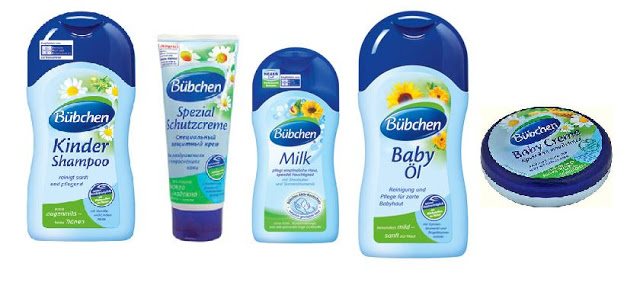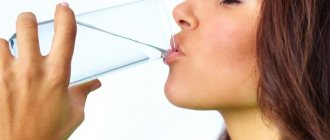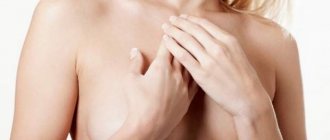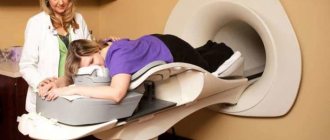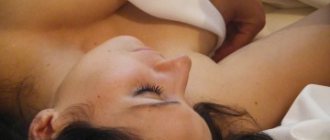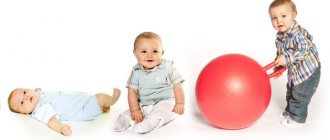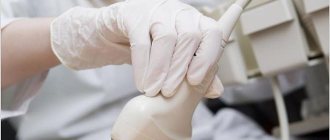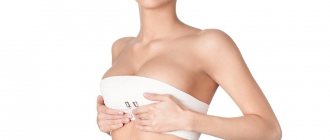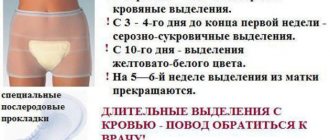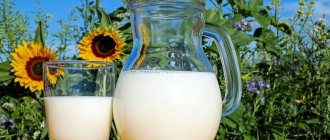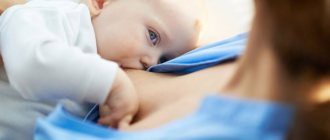Every expectant mother dreams of breastfeeding her baby, because breast milk is much healthier than formula milk. But, faced with reality, many refuse this. The main motivation is pain during and after feeding. But this can be eliminated and you can continue to feed the baby with healthy mother’s milk.
It is important to learn what to do if your breasts hurt after feeding and find out whether you need to see a doctor. You may be able to help yourself on your own. Often, pain during feeding occurs only as a result of improper attachment of the baby. But there are also more compelling reasons when medical attention is required. In order to prevent this kind of trouble in time, you should study everything related to breastfeeding. Pain in the mammary glands will be discussed in more detail later in the article.
Types of pain syndrome
Breasts can hurt in different ways during and after feeding. A nursing woman needs to listen to her feelings and figure out how dangerous the presented pathology is.
Characteristic features of painful sensations include:
- In the first few days after birth, the uterus contracts to its normal size. This process is influenced by the production of the hormone oxytocin, which is produced by the woman’s body. The hormone production mechanism begins to work after the baby is put to the breast and continues for some time after the end of each feeding. At this time, the woman feels a tingling sensation in her chest, and this will continue for 4-5 days.
- When feeding, pain first occurs in the nipples, and then spreads to the entire breast and continues after. The sensation of pain is quite strong and the reasons for this may be: the presence of abrasions and cracks on the nipples or the presence of a non-standard nipple shape.
- If the breasts are hard and painful, and the skin is pale in appearance and has an uncharacteristic shine, then this may be stagnation of milk (lactostasis). The pain occurs due to the rapid presence of milk, which compresses the ducts with its mass.
- If measures are not taken, lactostasis can develop into mastitis. In this case, the skin becomes red, the mammary gland is swollen and very painful. If you have additional chills, malaise and high fever, you should consult a doctor.
This is important: These causes of chest pain can be prevented, and some can be easily tolerated. If mastitis occurs, only a doctor can help. Under no circumstances should you self-medicate. Until you receive qualified help, you can carefully express milk and apply ice in between feedings.
Reason 3. Lactostasis and mastitis
These diseases are common causes of chest pain in nursing mothers. Lactostasis is characterized by an inflammatory process in the mammary glands, accompanied by severe pain in the chest after feeding. But the woman’s general health remains good.
The disease occurs quite often, especially in inexperienced mothers who allow milk to stagnate in the ducts. This occurs due to improper latching of the baby to the breast, incomplete expression with a breast pump, squeezing of the mammary glands by tight underwear, and even the habit of sleeping on the stomach.
Coping with lactostasis is quite simple:
- Feed your baby more often, trying to get him to suck milk from the clogged area. To do this, his chin should be near the painful area.
- Apply a damp, warm towel to the mammary glands for a few minutes.
- To relieve swelling, use a cabbage leaf smeared with honey, which is applied to the sore breast.
- If, along with a burning sensation and other uncomfortable sensations, the body temperature rises, then acute purulent mastitis is diagnosed. The reason for its appearance is infection with coccal bacteria, most often Staphylococcus aureus. The pathogen penetrates the mammary glands through micro injuries and cracks in the nipples.
Distinctive features of the disease are a rapid increase in temperature to 39°C, weakness and headache, as well as chest pain that does not go away even after feeding. If you do nothing and do not consult a doctor, lumps that are painful to the touch form in the mammary glands, the skin over which turns red and becomes hot. At this stage, mastitis can be cured with antibiotics. In advanced cases, only surgery will help. During treatment, breastfeeding is prohibited. Therefore, it is better to prevent the disease than to suffer unpleasant consequences later.
Incorrect attachment to the breast
The most common cause of pain is considered to be improper attachment of the child to it. An inexperienced mother who practices breastfeeding cannot quickly learn how to do it correctly. Sometimes in the first days so much milk is produced that the newborn is not able to suck it all out. Then the body adjusts to the child’s needs. In the first days, so that the baby does not choke on the pressure of milk and there is no stagnation, it is necessary to partially express it before feeding.
Video
When there is a sudden production of milk, a woman feels colitis and aching in her chest - this is due to the fact that the hormone oxytocin causes the muscle cells around the milk sacs to contract and release it out. After a few days, the body adjusts to breastfeeding. You also need to learn how to properly attach your baby to the breast to avoid cracked nipples, stagnation of milk and mastitis.
Please note: Feeding a newborn is a serious and responsible process. Therefore, it must be made comfortable and pleasant for mother and baby, and this is only possible with proper attachment to the breast.
There are certain rules for this:
- The nipple should be grasped deeply; the entire areola should be in the mouth, not just the nipple, but if the areola is too large, then only part of it. The nipple should almost touch the soft palate. If everything turned out correctly, then the lower lip should be turned out, the tongue should be placed under the chest, but not protruded, and the cheeks should be puffed out. To perform the presented maneuver, you should force the baby to open his mouth wide. To do this, you need to pass the nipple along the baby's lower lip - this will trigger the feeding reflex, and he will open his mouth.
- Place the breast in the baby's mouth - you need to aim the nipple at the top of the open mouth and pull it closer to you.
- During the process, the baby's nose should touch the breast with its tip, and the chin should rest against the mother. If this does not work, then the breast will slip out of the baby’s mouth, and only the nipple will remain in it. This is not suitable for feeding - the baby will not get enough this way. There is no need to be afraid that the child will not be able to breathe, since the nose is pressed to the chest - if the nostrils are open, then everything is in order.
Preventive measures to prevent chest pain
Since the causes of burning and other unpleasant sensations in the chest are sudden influxes of milk, cracked nipples and mastitis, preventive measures should be aimed at preventing these problems:
- If pain occurs due to a large amount of milk, you can express a little. This makes the mother’s condition easier, and the baby’s sucking process is simplified.
- Apply your baby to the breast correctly to avoid cracked nipples. The feeding process should include the following stages: We bring the baby closer to the breast so that his mouth is opposite the nipple.
- As soon as the baby reflexively opens his mouth, we quickly apply it so that the lower jaw touches the breast as far as possible from the nipple, and the mouth covers not only it, but also the nipple space.
- The baby begins to suck effectively without damaging the delicate tissue of the mammary glands.
- Avoid pacifiers and bottle feeding. The child quickly learns that when sucking he can open his mouth not wide. Therefore, when applying to the breast, it acts on the same principle.
In the first months after the birth of a child, a young mother needs to follow simple recommendations. And then the joy of motherhood will not be overshadowed by unpleasant consequences, such as a burning sensation in the chest after feeding.
Breastfeeding is a harmless, joyful, but at the same time responsible process, thanks to which the newborn receives the necessary beneficial microelements and vitamins. Breast milk helps create a close bond (feelings of security and closeness) between mother and baby. However, this pleasant period can be overshadowed by breast pain during feeding, not only in young mothers, but also in more experienced ones. There are many reasons for this, which means you shouldn’t ignore discomfort and pain in such a tender place.
When breastfeeding, a new mother may experience breast pain
Nipple injuries
Pain during and after application occurs due to trauma to the nipples in the form of cracks and abrasions. All this happens due to improper attachment to the breast. Usually, every woman experiences unpleasant and even painful sensations in the first days. Over time, the skin of the nipples becomes rougher and the pain recedes. But, if the baby holds only the nipple in his mouth, as a result of continuous friction, minor injuries to the nipple and its deformation occur.
Minor injuries and cracks may also appear due to the following reasons:
- improper removal of the breast from the baby's mouth;
- use of hygiene products that dry the skin;
- with a deficiency of vitamins A, C, E, D, B, which affect skin elasticity;
- leakage of milk from the nipples in the first weeks after the start of breastfeeding - this provokes injury to the nipples, since wet skin constantly rubs against the bra, which can easily form cracks and abrasions.
To prevent these injuries, you should constantly monitor the baby’s grip on the nipple; if he has moved and is sucking only the nipple, you should carefully but quickly remove the breast, for which you need to insert a finger into the corner of the baby’s mouth and unclench the jaw. Then apply it again, but this time as it should be. Older children should not be allowed to play with their breasts or move their heads during meals. If milk leaks, absorbent pads should be used and replaced as soon as they become wet.
Practical advice: In the event of an injury, you can use silicone nipple covers for their rapid healing. And to speed up this process, fresh air should be provided to the wounds more often and treated with regenerating ointments between feedings.
The most effective remedy is breast milk, which should be lubricated with nipples and allowed to dry. Mother's milk has antibacterial properties, nourishes and moisturizes the skin.
Video
You should not accustom your baby to a pacifier or bottle with a nipple - sucking on them does not require opening your mouth wide, as with breastfeeding. Having learned to suck like this, the baby will take the breast in the same way, which will only injure the nipple.
Causes of chest pain
Pain in the mammary glands during or after feeding can occur for various reasons.
It is important to correctly identify the triggering factors. You cannot self-medicate, because this way you can harm not only yourself, but also your child. Traditional recipes and home remedies are not always effective, and it is better not to use medications without first consulting a doctor.
All the reasons why chest pain may occur during lactation are conditionally divided into several blocks:
- failure to adhere to the technique of putting the baby to the breast during feeding;
- improper care of the mammary glands before or after feeding the baby;
- diseases of the mammary glands.
It is unlikely that it will be possible to determine the exact cause at home. If the pain symptom causes severe discomfort, you find it difficult to feed your baby because of this pain, you should immediately consult a doctor. The first thing he must do is to feel the mammary glands for the presence of lumps and neoplasms, then the mammologist will refer you for tests and a series of diagnostic techniques. Only after establishing the true cause can treatment begin. Otherwise, you can relieve the symptoms, but the problem will remain.
Breast diseases
Pathological changes in the mammary glands often become the main reason why pain in the chest occurs during lactation. Timely diagnosis is the key to quick and successful treatment of the disease.
During pregnancy and breastfeeding, the mammary glands become especially sensitive, local immunity decreases, and infection can easily penetrate through open ducts.
Consultation with a doctor is necessary in the following cases:
- severe pain and burning sensation occurs in the mammary glands during or after feeding;
- the pain is felt somewhere deep in the chest;
- nipples are very sore, and this is not related to feeding the baby;
- Redness, pimples, and itching appeared in the nipple area.
If painful sensations are accompanied by symptoms such as fever, weakness, increased fatigue, roughening of the skin, there is reason to suspect that mastitis is developing.
This disease cannot be neglected, as it can lead to very complex consequences. Pain can also be caused by a fungal infection. In both cases, you need to take antibiotics, so you should stop breastfeeding for a while.
A fungal infection, or as it is also known – thrush, is dangerous because pathogens can easily penetrate the baby’s body. This disease is quite difficult for a child. He develops a white coating on his mucous membranes, damage, pain, and cracked skin in the corners of his mouth.
Another serious pathology that is accompanied by painful sensations in the mammary glands is mastopathy. This is a disease, the essence of which is that benign formations are formed from connective tissue in the breast tissue. The main reason for the development of the disease is a hormonal imbalance in a woman’s body. If the tumor is small and does not progress, you do not need to do anything with it. The decision to take radical measures is made only if there is a risk of its transformation into a malignant tumor or if it is rapidly increasing in size.
Other factors
Sometimes such trivial reasons as choosing the wrong size underwear, poor nutrition, or improper breast care after feeding can cause breast pain and the development of pathologies.
But there are situations when pain in the mammary glands is normal, and you can cope with it at home using improvised methods. How to recognize so-called harmless chest pain?
- Immediately after childbirth, the body begins to produce large amounts of milk. A small child does not have time to suck it out, the breast becomes full, stretches, and unpleasant sensations arise.
- Eating hot food stimulates milk production in higher doses, so you should watch your diet.
- The first menstruation after childbirth is also accompanied by mild pain in the mammary glands. In addition, a woman may have pain in the lower abdomen and a feeling of weakness.
Improper hygiene also contributes to the development of problems with the mammary glands during lactation. Due to frequent washing of the breast after feeding, the skin becomes dry and cracked. If you do not monitor the condition of the mammary glands at all, an infection may develop and an inflammatory process may begin. To avoid this, you should use pads, special ointments and gels, wash your breasts regularly, but make sure that the skin is not dry.
Lactostasis
In the first weeks after the start of lactation, the baby does not eat the offered volume of milk, so stagnation in the ducts may form - lactostasis.
Important! If you do not take any measures to eliminate it, mastitis may develop - inflammation of the mammary gland.
If your breasts ache after feeding and lumps are felt in it, and the area becomes bluish, burns or burns, then stagnation has formed. It is also provoked by constant pumping of milk after feeding, hypothermia and squeezing the breasts with tight underwear or sleeping on the stomach.
You can eliminate it yourself by doing the following:
- Carefully express a noticeable amount of milk.
- In order for the stagnation to resolve, you should put the baby on your chest more often, pressing his chin to the place of compaction. If you cannot feel the seal, apply it to the sore spot.
- Make a cold lotion by wetting and wrung out a towel and applying it to the sore spot for 5-7 minutes.
- You can apply a cabbage leaf to the sore area to relieve inflammation and swelling.
This should be done immediately so that stagnation does not turn into mastitis.
Video
Possible reasons
Why do my breasts burn, tingle and itch during feeding? Painful sensations are often associated with restructuring of a woman’s body. Letting down of milk (especially for a new mother) can cause burning and tingling in the breasts; This goes away after feeding or pumping. Also, causes of pain during any period of lactation include:
- rapid flow of milk before, after or during feeding;
- wounds, cracks or other injuries on the surface of the nipples;
- lactostasis (milk stagnation) or, as a result, a complication - mastitis (inflammation of the mammary gland);
- mastopathy (benign breast disease not associated with breastfeeding);
- incorrectly chosen bra.
The degree of discomfort depends on the woman’s pain threshold. One nursing mother may feel the usual tingling sensation in the mammary gland during lactation, while another may experience pain not only in breastfeeding, but also in touching it. In any case, a woman should monitor her health and conduct preventive examinations more often to prevent possible complications.
Flushes of milk
Not all young mothers know about such a thing as the hormone oxytocin. It is he who is responsible for reflexes during labor and lactation. At first, a woman may even have complaints that her breasts hurt during feeding, or that there are unpleasant sensations in the lower abdomen or in the nipple area. Oxytocin increases blood flow, which causes increased milk production even when simply remembering the baby or thinking about previous feeding.
Often, breast pain in a nursing mother appears precisely because of an excess of milk: the baby is full and has to express the rest. In this case, it is important to learn the correct technique for putting your baby to the breast, maintain a daily routine and follow a certain schedule. Then milk will be produced in the right quantity without excess.
Milk flow is one of the causes of breast pain.
If the baby does not have time to eat everything, then the milk must be expressed. At first, when the baby does not yet know how to attach to the breast, you have to interrupt the feeding yourself by pulling out or tearing out the nipple. However, such careless actions can lead not only to pain and burning during breastfeeding, but also to injuries (wounds, cracks, abrasions, bruises), which, in turn, are the causative agents of infectious and inflammatory diseases.
Also, excessive sterility will not lead to anything good. Overly clean mothers often make the mistake of washing off with soap not only possible dust and dirt, but also the necessary, kind of beneficial microflora. The woman is deprived of a protective film that has bactericidal and moisturizing properties, and the child does not fully develop immunity to external irritants. This is one of the reasons why a nursing mother’s breasts hurt, the skin dries out and becomes injured, and wounds and cracks appear on the nipples.
Often the causes of complications are improperly selected underwear, which rubs or strongly compresses the mammary glands. During lactation, you will have to give up the sexy breast-lifting bra for the sake of health. Special equally beautiful underwear has also been created for nursing mothers.
Thrush
Thrush is a Candida fungus that appears as a white coating and cracks on swollen, dry nipples. In this case, feeding and expressing milk causes severe pain in the breasts of the nursing mother due to damage to the milk flow. You can cope with the disease on your own only in the initial stages, but breastfeeding in this case should be stopped.
If a young parent does not want to deprive the baby of breast milk, then you should immediately consult a doctor who will suggest a quick and safe method of treatment, select and prescribe the right medications. Self-medication can only cause complications, because if thrush takes you by surprise, then you are already doing something wrong.
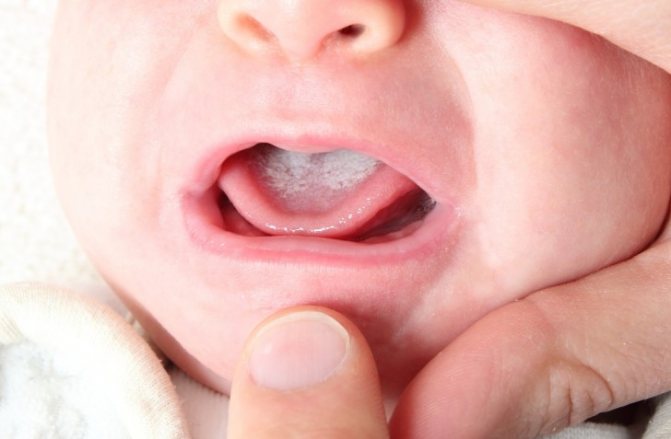
If hygiene rules are not followed, thrush may appear on the woman’s chest and in the child’s mouth, which must be treated immediately after detection.
Lactostasis
1) Menstruation. A slight burning sensation and breast enlargement before menstruation are normal. These are the tricks of the increased amount of estrogen, the female hormone. However, almost all other reasons also involve hormones in one way or another. Here I would like to note that if discomfort and even pain persist after menstruation, be on your guard.
2) Pregnancy. But if you haven’t gotten your period this month, and your breasts are growing by leaps and bounds and you feel a burning sensation, congratulations, you may be pregnant. It is the increase and some discomfort that are the first “bells” of successful conception. The gland is preparing for lactation, the tissue grows, and so a kind of “burning” distension appears.
3) Breastfeeding. Inexperienced mothers who do not yet know how to properly attach their baby to the breast often experience such a nuisance as lactostasis (milk stagnation). In order for all the milk to be in demand by the baby, you need to feed on demand, and not by the hour, as our grandmothers bequeathed. Don’t be lazy to get up at night, and then you won’t be at risk of lumps in the mammary gland while breastfeeding, which can cause a lot of trouble, including burning and fever.
4) Mastopathy. When it really burns, it’s with mastopathy. It can develop both due to hormonal imbalance and due to ordinary stress. A burning, aching pain appears shortly before menstruation and “spills” from the chest into the armpit area. At the same time, enlarged lymph nodes are felt in the armpits, and dense balls are felt in the chest itself.
5) In menopause, while the hormones have not yet subsided, nagging pain and burning are also possible. This is the norm, but visit your gynecologist periodically to monitor the situation. A lump in the chest, like a harmless fibroadenoma or cyst, is of no use to you. These tumors must be removed and analyzed for the presence of malignant cells.
6) Injuries. We will not take serious cases, for example, accidents, when the chest can be seriously injured. Even a harmless fall from a bicycle or your own height while skating can cause extreme stress to your airbags. Breast tissue is very delicate and sensitive and any impact can disrupt its normal functioning. The chest begins to “bake” and ache.
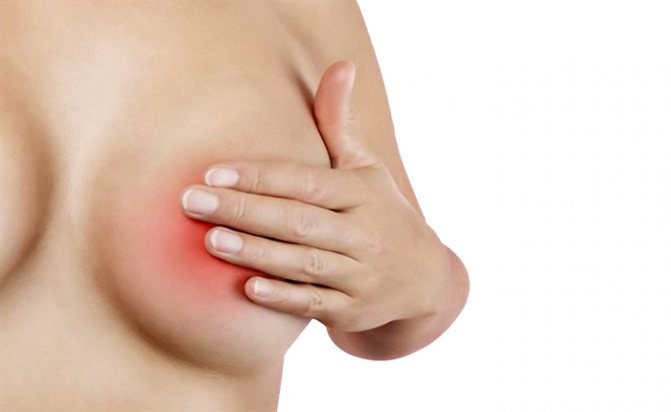
7) Disease of the organs (endocrine system, gastrointestinal tract, heart) When the heart muscle experiences a spasm, you may feel as if someone is squeezing your chest.
Stress. Being nervous is harmful not only because of poor sleep and skin color; your breasts also experience enormous changes during the period of your nervous turmoil. Remember the phrase “All illnesses come from nerves” and...calm, only calm!
9) Poor hygiene. Try to change your underwear more often, choose bras only from natural fabrics. Test soap or shower gel, as well as new-fangled deodorants, for an allergic reaction first. Apply a small amount to the inside of your elbow and wait a few minutes. There is no redness or burning - feel free to use it. If spots and itching appear, remove these hygiene products away. Otherwise, your breasts may take revenge on you.
Mastitis
Mastitis develops if an infection penetrates into the milk lobules. It is very difficult or almost impossible to strain out the resulting compactions yourself. Purulent mastitis is considered the most dangerous. Its symptoms are severe throbbing pain in the mammary gland, purulent discharge from the nipple, weakness and high fever. Doctors do not recommend self-medication - in this case, the patient needs qualified medical care, and quite often, surgical intervention.
Nature of pain
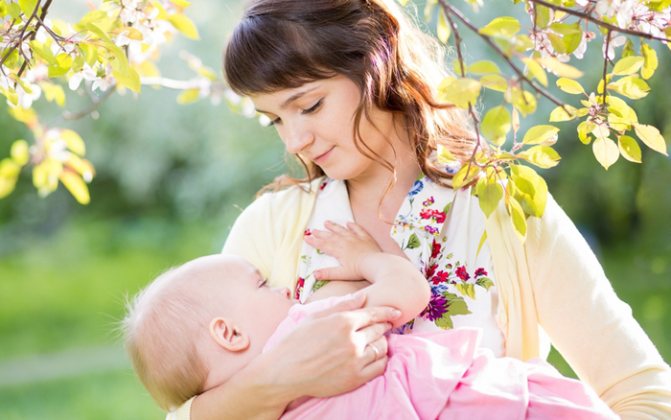
If chest pain bothers a woman and prevents her from leading normal life activities, perhaps the reason is more serious than poor nutrition, wearing a tight bra, or improper attachment of the baby to the mammary glands. The true cause of the unpleasant condition can be determined only after a full examination, tests and consultation with a mammologist.
Painful sensations in the mammary glands during lactation can be very different. If pain occurs during feeding, most likely the baby is not latching onto the breast correctly.
The way out of this situation is to learn proper feeding techniques; this will have a positive effect not only on the condition of the nursing mother, but also on her child. Unpleasant sensations during feeding can also occur if the baby has already teethed.
The mammary glands may also hurt after feeding. The symptom quite often worries women who have given birth for the first time and were not familiar with how to properly care for their breasts. The pain may be accompanied by a feeling of fullness and burning.
The main reasons for this condition:
- untimely feeding of the child;
- increased temperature in the room;
- poor nutrition;
- consumption of large amounts of fluid.
All these factors lead to the development of lactostasis - a condition when more milk is produced than the baby can suck out. Simple preventive measures will help improve a woman’s condition, reduce the intensity of pain, and prevent the development of serious diseases.
Sometimes women complain that they are worried not only by pain, but also by a burning sensation in the area of the nipple-alveolar complex. Most likely these are cracks in the nipples. Thrush is also accompanied by these symptoms. To be sure of the root cause, you should contact a specialist.
Candidiasis
Candidiasis (thrush) very often appears in a pregnant woman and remains after the birth of the baby, “settled” in the mammary ducts and nipples. It also enters the child’s mouth. Symptoms of the lesion in question are itching and burning during the baby’s meal, which intensify towards the end of the meal. In this case, both mother and child should undergo a course of therapy with medications prescribed by the doctor.
This is important: To avoid such problems when breastfeeding, you should wash your breasts with warm water before each feeding and take a shower every day. While washing, you can massage the mammary glands in a circular motion. After each feeding, take air baths for at least 15 minutes.
The article provides detailed answers to the question of why breasts hurt after feeding. It is important to remember that breastfeeding is not only about feeding the baby, but also about communication between mother and baby. Therefore, breastfeeding should be handled responsibly so that both mother and baby feel comfortable.
Beginning milk stagnation
How to determine that a nursing mother has stagnated milk? There are several signs:
- Seals, lumps in the mammary gland.
- Redness and rising temperature.
- Feeling of heaviness in the chest.
Important! If your milk stagnates, put your baby to your breast more often so that he can effectively dissolve the formed lump.
If the baby cannot cope, then you need to express the breast yourself, doing it gently and painlessly. And then attach the baby. Read about how to properly express breast milk by hand>>>
If you can’t cope on your own, don’t delay it and invite a full-time breastfeeding consultant to your home.
Why do breasts itch when breastfeeding?
Itching of the skin in the area of the mammary glands bothers about half of breastfeeding women. But few people attach serious importance to this symptom. Most women successfully cope with scabies on their own using home methods. And only a small proportion of nursing mothers consult a doctor when itching in their breasts. Most often, accompanying symptoms force you to visit a specialist—violation of the integrity of the skin, strange discharge, pain, lumps, and others.
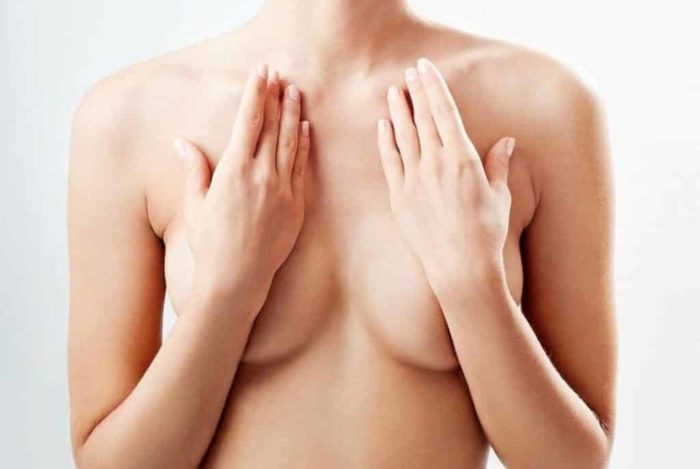
Fungus
The first thing a nursing mother thinks about when her breasts are itchy is skin fungus. During breastfeeding, many women are concerned about nipple candidiasis. At the same time, the fungus appears in the baby’s mouth, causing unpleasant symptoms. Therefore, thrush during breastfeeding should not be ignored. The sooner you see a doctor and start treatment, the faster the itching will go away, and the child will experience pain and irritation in the mouth.
Breast thrush can be identified by the following signs:
- the chest itches constantly, and not from time to time;
- there are whitish flakes on the nipples;
- the skin under the plaque is inflamed and bleeds;
- when scratching, irritation appears and ulcers form;
- the baby has a white coating in his mouth, under which there is inflamed mucous membrane;
- the child sucks poorly and becomes capricious.
Thrush during breastfeeding is treated with antifungal drugs prescribed by a doctor. At home, you can treat the mammary glands with boiled water with the addition of soda.
Incorrect attachment
If your breasts itch after feeding, the cause may be improper attachment. If the areola is not fully captured, the mammary gland is not completely emptied. This leads to stagnation of milk and lactostasis develops. A woman develops lumps that become large and painful over time.
If applied incorrectly, the baby rubs the tender skin of the nipples with his gums. Mom develops cracks, which also hurt and itch. Often, women develop mastitis if they are applied incorrectly. Inflammation occurs due to the penetration of microbes into cracks.
For mastitis, antibiotics are often needed, but drugs that are compatible with breastfeeding are usually prescribed.
Irritation, dry skin
During pregnancy, women's breasts increase greatly. Many people notice purple-red stripes (striae) that appear due to rapid stretching of the skin.
In the first days after childbirth, mothers usually do not feel significant changes in the mammary gland. After 4-5 days the milk comes. The gland greatly increases in volume, and the skin stretches. At this time, the mother may notice that she experiences itching when breastfeeding. This is a natural, albeit unpleasant reaction.
It is important to take care of your skin during this period to prevent new stretch marks from appearing. After a few weeks, lactation will be established and the disturbing itching will go away.

Skin infections
During breastfeeding, a woman's risk of skin infections increases. Chronic non-infectious diseases may also worsen. If itching in the breast area, the cause may be:
- psoriasis;
- lichen;
- scabies;
- erythema;
- hives.
Skin infections are caused by bacteria, viruses, and fungi. The causative agent of the disease can be determined using laboratory tests.
Allergy
One of the common causes of breast itching during lactation is an allergic reaction. A nursing mother becomes more sensitive. Women use new products to care for their skin - gels, lotions, creams. These are the ones that most often cause allergies.
After giving birth, a nursing mother is forced to change her underwear. If the bra is made of synthetics, then an allergy occurs. A skin reaction appears in response to taking vitamin complexes and lactogenic preparations.
If you have an allergy during lactation, it is enough to stop contact with the allergen. You should not take herbal preparations, vitamins and biological supplements without a doctor’s prescription. For skin care, it is recommended to choose hypoallergenic cosmetics intended for nursing mothers and pregnant women.
